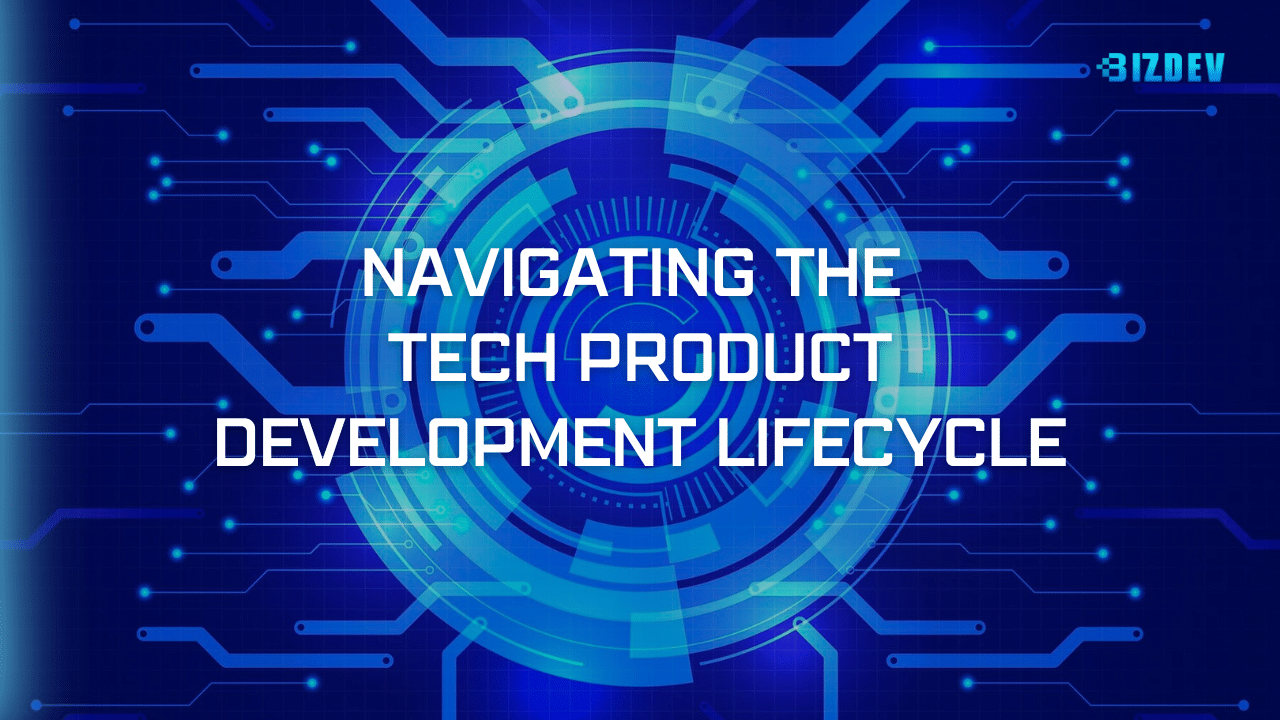Bringing a tech product from concept to market is an exhilarating journey – one that requires strategic planning, collaboration, and unwavering focus. In this blog post, we’ll explore the pivotal stages in transforming an idea into a market-ready product. Whether you’re a startup or an established company, understanding the product development lifecycle is essential for success.

Idea Generation and Screening
The journey begins with ideation, where creativity meets market needs. Brainstorming sessions, market research, and customer feedback play pivotal roles in generating viable product ideas. As a Bizdev company, involve cross-functional teams, subject matter experts, and stakeholders in this process. Remember, not all ideas are equal; screen them rigorously based on feasibility, market demand, and alignment with your business goals.
Concept Development and Testing
In the conceptualization phase, ideas become tangible. This stage aims to validate whether the concepts are worth developing and likely to produce value for the end user. Here’s how to proceed:
a. Prototyping
Prototyping can be as simple as sketching design frames on paper or as complex as creating interactive designs using tools like InVision. Define your target segment—understand where your product fits into their daily lives. Prototypes help visualize the user experience and gather early feedback.
b. Testing and Analysis
Multiple testing methods come into play: user testing, surveys, A/B testing, alpha and beta testing, and more. These validate assumptions, uncover usability issues, and refine the concept. Analyze the results to make informed decisions about moving forward.
Business Analysis
Before diving into full-scale development, conduct a thorough business analysis. Evaluate the financial viability, market potential, and competitive landscape. Consider factors like cost, revenue projections, and scalability. Collaborate with finance, marketing, and legal teams to align the concept with your overall business strategy.
Product Design and Development
This is where the magic happens. Your cross-functional team—engineers, designers, and product managers—collaborate to build the product. Agile methodologies, sprints, and continuous iteration drive progress. Keep the end user at the center of design decisions. Develop features incrementally, test rigorously, and refine the product iteratively.
Market Testing
Before the grand launch, conduct market testing. Deploy the product to a limited audience—alpha testers, early adopters, or a closed group. Gather feedback, monitor performance, and identify any last-minute tweaks. Use this phase to fine-tune your product based on real-world usage.
Commercialization and Market Launch
It’s showtime! The product is ready for the world. Plan a strategic market launch—consider timing, channels, and messaging. Leverage marketing, PR, and sales efforts to create buzz. Monitor user adoption, track KPIs, and be prepared to address any post-launch issues.
Post-Launch Review and Scale-up
The journey doesn’t end at launch. Conduct a thorough post-launch review. Analyze user feedback, performance metrics, and market reception. Identify areas for improvement and prioritize enhancements. As your product gains traction, plan for scalability—both technically and operationally.
Conclusion
Navigating the tech product development lifecycle requires agility, adaptability, and a relentless pursuit of excellence. Embrace each stage, learn from failures, and celebrate successes. Remember, the journey from idea to market is not linear—it’s a dynamic loop of innovation and evolution. So, go forth, create, and make your mark in the digital landscape!
